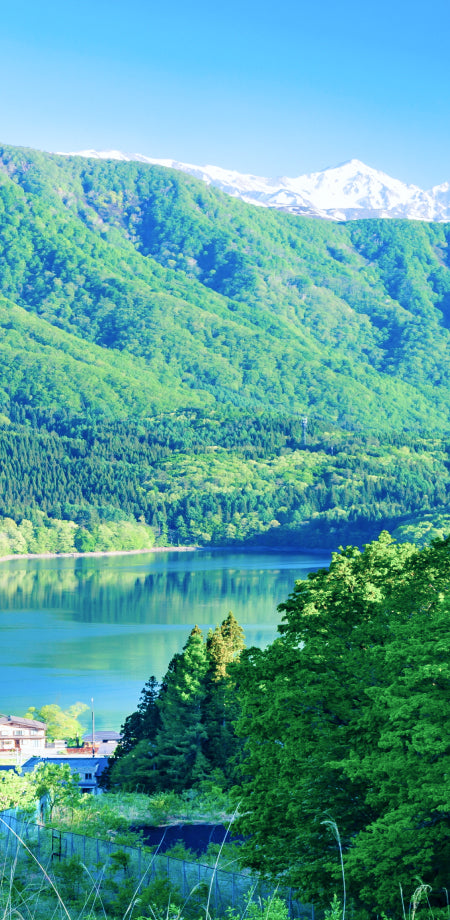投稿日:
更新日:
A new history woven in Okaya ShinshuSilk Story
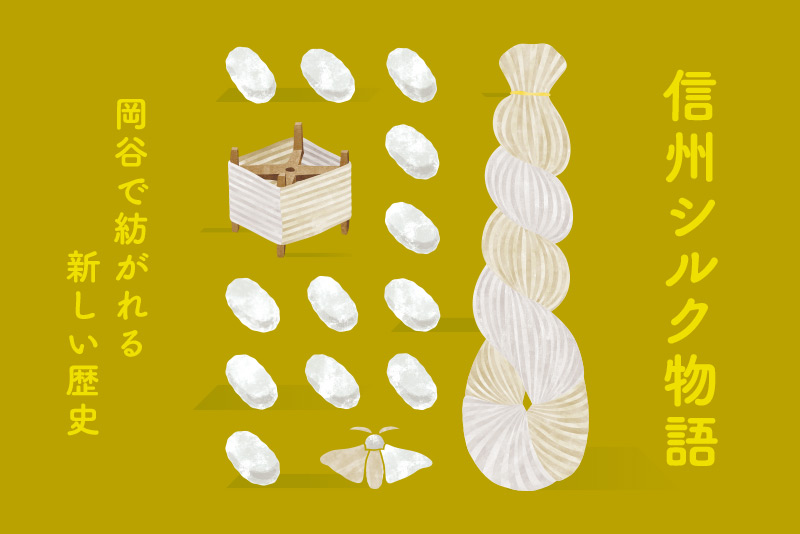
It was said to be the silk kingdom Nagano prefecture. The legacy of the mulberry fields has been transformed into orchards, while the silk mill has been transformed into a precision equipment factory. Nagano It supports the prefecture. And Okaya, known by the world as a town of silk, continued the story.
Nagano Silk industry was the foundation of the prefectural industry
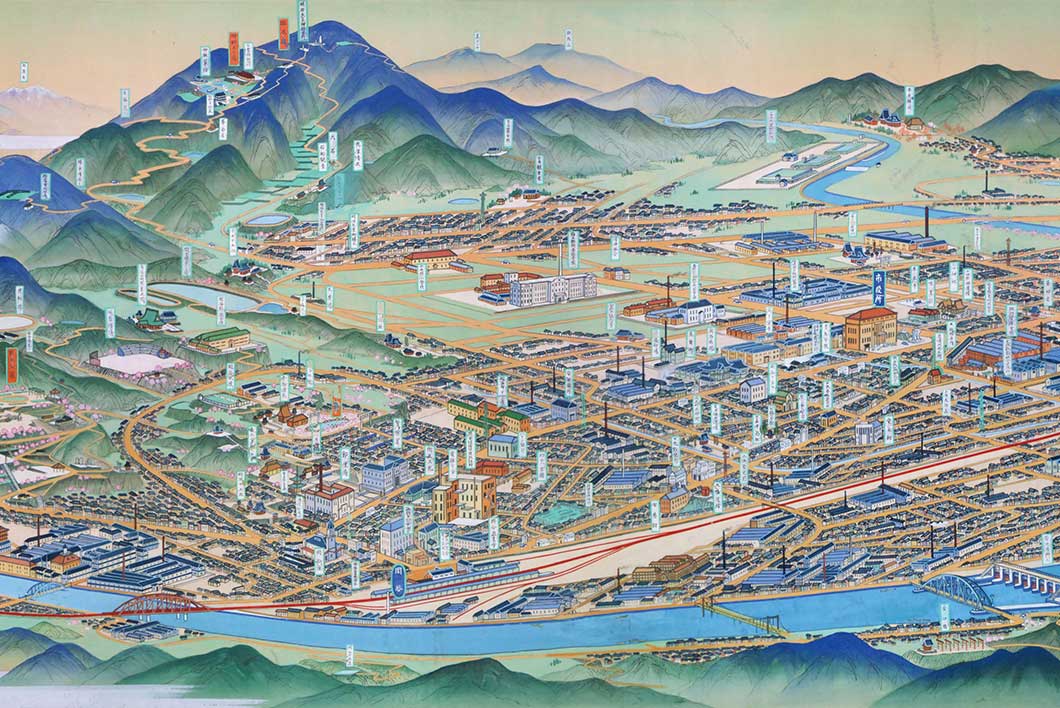
The "Bird-eye View of Okaya City" created by Yoshida Hatsusaburo when the city was established in April 1936 shows how prosperity was at the time when silk mills lined up.
The silk industry was a core industry in the country from the end of the Edo period to the early Showa period. Since 1877, Nagano The prefecture has become the silk kingdom, which boasts the largest production volume of both cocoons and raw silk in Japan. One of the factors behind this is Nagano The prefecture was a suitable place for "sillicuria" to produce cocoons. During the Edo period, sericulture industry began mainly in the Ueda area, which was already one of the largest production areas in Japan, and in 1912, more than 60% of farmers in the prefecture carried out sericulture. Today, mulberry fields at that time were reborn as fruit fields such as apples and grapes, and today Nagano It is the foundation of prefectural agriculture.
Meanwhile, the Suwa and Okaya regions developed through the silk industry's "silver production." At its peak, about 30% of domestically produced silk were produced. Nagano Okaya City, produced in the prefecture and the largest producer, was called "Shito Okaya" in Japan and "SILK OKAYA" from overseas.
The birth of "Itotsuokaya"
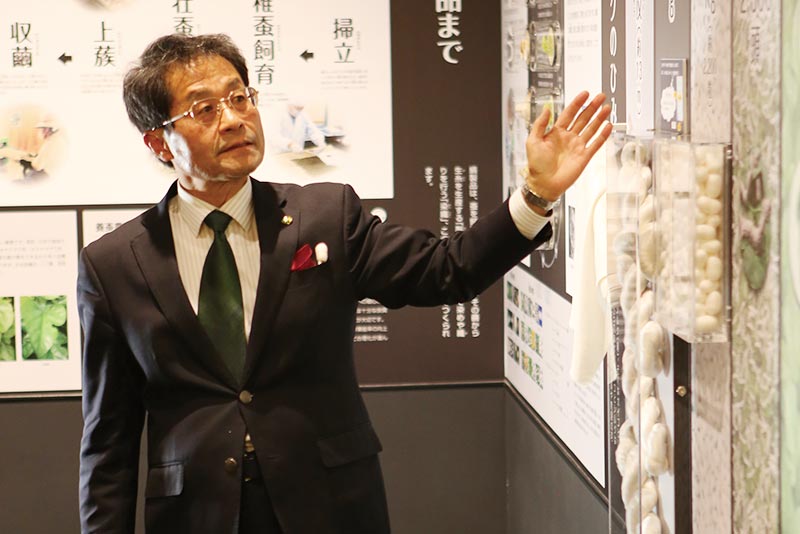
Director Takabayashi guides visitors around the building
"Without water, the silk industry would not be possible. There was a wealth of high quality water here," says Takabayashi Chiyuki, director of the Okaya Silk Museum. The 31 rivers that flow into Lake Suwa were able to obtain water to boil the cocoons, and the quality of the water was soft water that easily loosens the threads. Then, by hanging a large waterwheel on the Tenryu River, which was drained from Lake Suwa, we were able to obtain the power of the reeling machine.
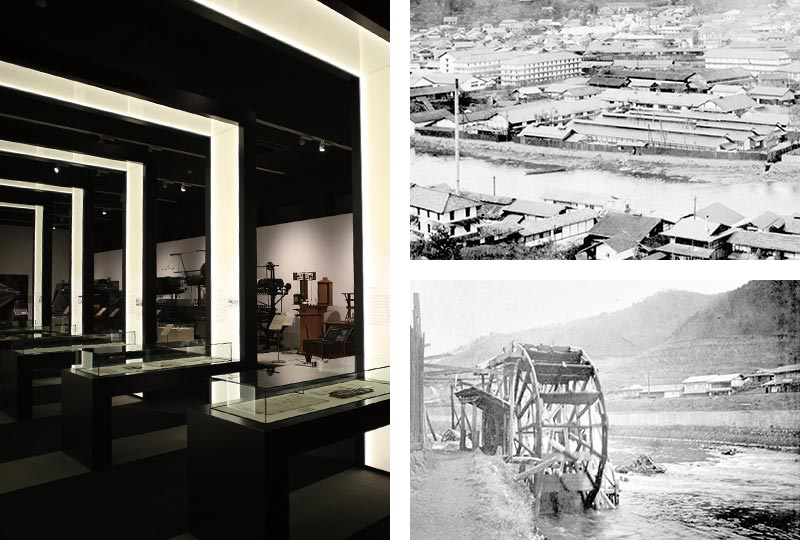
The Okaya Silk Museum displays various silk machinery as well as panels and materials that trace the history of silk.
In 1875, the Suwa-style thread reeling machine was born, which incorporates the advantages of overseas styles. In 1905, the National Railways Chuo Line extended from Hachioji to Okaya, and Okaya developed further.
"The presence of people was also huge. We must not forget the talent of the business owners, represented by the Katakura family, and the strength and hardships of many craftsmen," continues Director Takabayashi.
The present and future of silk silk
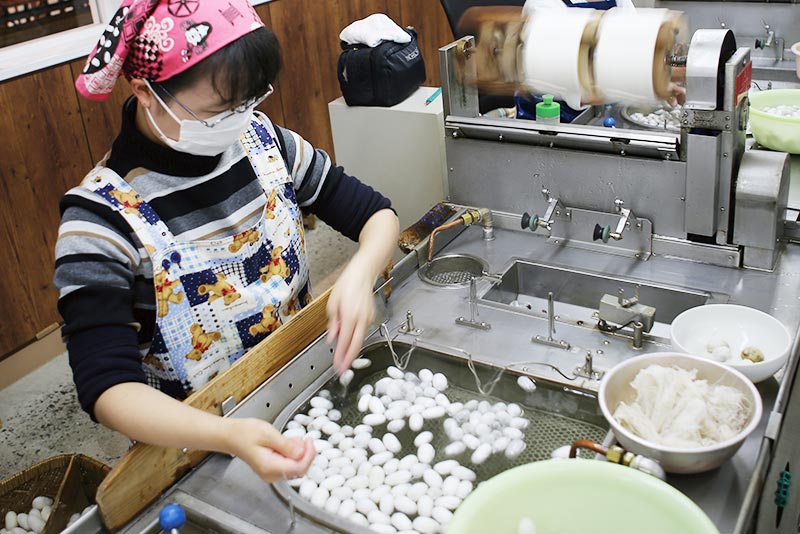
Miyasaka Silk Mold is Japan's only silk mill, where traditional raw silk production methods remain.
In the early Showa era, there were 3,300 companies in Japan and 200 companies in the city alone, but now there are four companies (including 4 companies). Nagano Only two companies in the prefecture are left. One of them is Miyasaka Silk Medicine, which was founded in 1928 and is now located inside the Okaya Silk Museum.
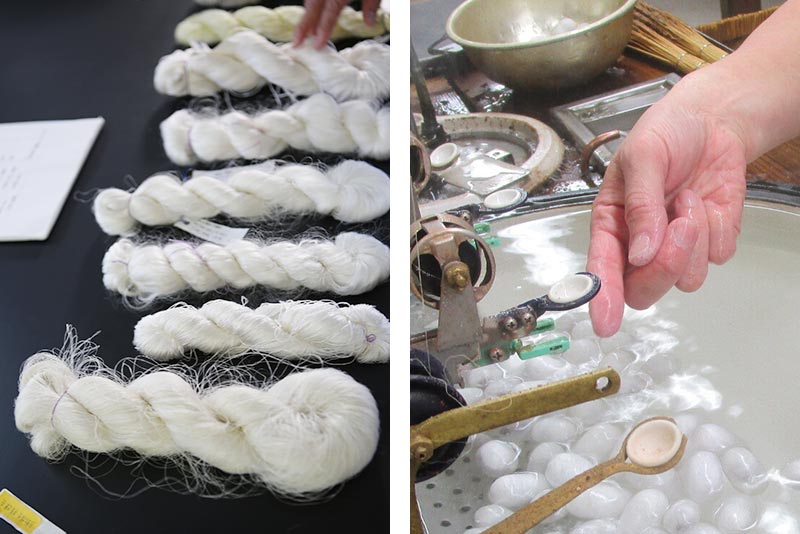
(Left) Various raw threads with different thicknesses and colors
(Right) Adding threads to make the thread even thicker with skilled techniques
You can see the precious hand-made thread reeling techniques and the techniques of thread pulling using Joshu-style and Suwa-style thread reeling machines up close, and we also accept orders for special raw threads and small lots that dyeing and weaving artists want. Furthermore, we developed thick, flat "galactic silk" with the aim of creating threads that are easy to reach, not bound by the preconceived notion that they are thin and uniform. The soap that focuses on silk ingredients is also popular.
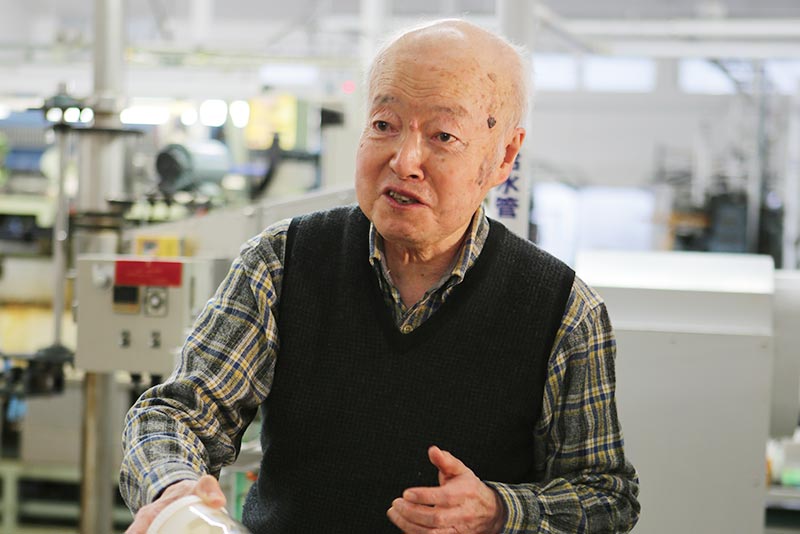
Chairman Miyasaka says he wants to take on new challenges while inheriting silk-making machines and techniques.
"If you look at the world, the demand for silk has not decreased. There are many possibilities and I think it will expand even more," says Miyasaka Teruhiko, the second-generation chairman. Many of the silk mills on Lake Suwa have transformed into precision machinery industries, but the spirit of manufacturing cultivated in the silk industry remains today. Nagano It continues to lead the prefecture's industry.
Reborn Okaya Silk

Okaya Silk Workshop produces silk products with a unique texture, hand-dyed and hand-woven.
At the former Yamaichibayashi Corporation Silk Office, a nationally registered tangible cultural property and a romance of Taisho, members of Okaya Silk Studio are working to inherit and evolve the tradition of silk fabrics. And this year, original products unique to Okaya Kinu Kobo will be born.

Sasaki, a regional revitalization team, wants to re-released Okaya Silk brand to the world
"It's the world's number one silk town, and we want to create a genuine "Made in Okaya" that takes place in the city, where the entire process is done in the city. We also want to tell many stories about silk. With this in mind, we planned "Furoshiki" as our first attempt," says Sasaki Chirei, who is involved in Okaya Silk's branding as a regional revitalization team. When a craftsman returned home, he emphasized that he had miso and silk products wrapped in a furoshiki to hold them, and that it could be used for a wide range of purposes, including eco bags, lap blankets, and scarves.

(Left) Products that make use of the high level of weaving techniques and rich expression are attracting attention.
(Right) Furoshiki during the prototype stage, such as pattern and thickness.
"It is important to have them used on a daily basis, and the texture of silk will make you more fond of silk because of its feel to the touch, its sturdyness, and its worn-out texture. I want to convey the charm of silk more from Okaya. I want to come to Okaya to feel the charm of silk more. I want to create a new silk culture from Okaya."
Okaya Silk's pervert is just beginning.
Click here for Okaya Silk's story and videohttps://www.ginza-nagano.jp/blogs/staff-column/50462
What is the fiber diamond "Tenzami"?
Nagano The Komagane Silk Museum (Komagane City), former Tsunedakan Seisakusho (Ueda City), Katakurakan (Suwa City), and there are many facilities where you can experience the legacy of silk. One of them,Azumino CityWe visited Tenjan Center.
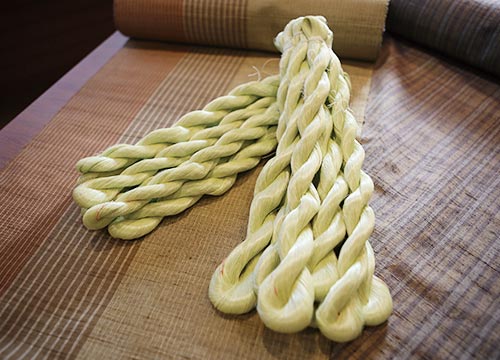
[The person I spoke to]Azumino CityTaguchi Tadashi, Chairman of Tenjan Promotion Association
What is Tensan?
Silkworms, which are raised indoors, are called domestic silkworms, and wild mountain yuga are called ten silkworms. The silkworms come with white threads, while the silkworms come with yellow-green threads. It is endemic to Japan. Approximately tens of thousands of them are produced nationwide, of which 40,000 are produced at facilities related to Tenjani Center.
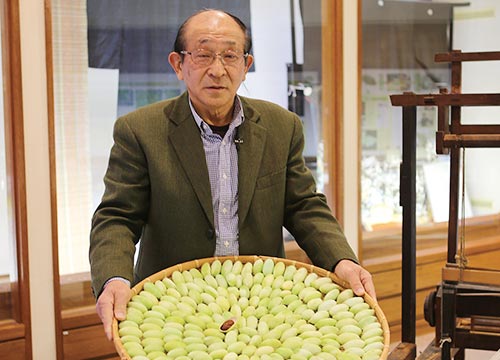
What are the characteristics of thread?
The yellow pigment turns green in the sunlight and gives it a yellow-green shine. This is a rare thread called "yarn diamond" and is characterized by its flat, thick, unique luster and strong.
Why did Tenmakusa become so popular in Azumino?
There was a rich oak forest at the foot of the Northern Alps, and I think it was suitable for growing it. In the Showa era, production stopped for a while, but there was a movement to revive the Tenjan culture, and this center was opened in 1978. We would like to create new value for the Tenjakuni by passing on the inherited culture to future generations.
This article is information as of January 2022.
Please note that the products we carry may have changed.















